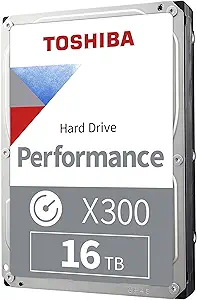Auto Glass Black Enamel1.INTRODUCTIONGeneralIn the automotive
industry two kinds of glass enamels are used, laminated and
toughened. Toughened products are used for side lights, back lights
and sunroofs; laminated products for windshields.Side LightsThe
side lights are in fact the less technical demanding with respect
to the glass enamel. Semi-mat shine and printability on both the
air and tin side of the glass, without any change in color are the
main characteristics of this kind of glass enamel. There are heavy
metal-free glass enamels in all kind of media systems available for
side light printing, but also side light designers are more and
more requiring complex bending. Again non-stick properties of the
glass enamel are becoming more important. The tendency to use
conductive pastes on side lights is already noticeable(burglar
alarms and antennas).For the short term the enamel for side lights
will need a fair amount of research and development work in order
to live up to the new requirements. Back LightsThe back light is
traditionally the most complex piece of glass in the car. It can
have a very complex shape and therefore the enamel must have very
good non-stick properties, as the glass is bent by a press at about
700ºC.A large amount of black enamel is used for obscuring and
styling aspects. The glass enamel has to be overprinted with a
conductive ink for the defrosting/defogging circuit. The glass
enamel has to hide the silver bus bar (when seen through the
glass).The strength of the soldered electrical connectors onto the
circuit must not be affected by the glass enamel. And last but not
least, the glass enamel must keep its' neutral black color.Knowing
all this, it is hardly surprising that a lot of research and
development has been put into enamels for toughened glass. Heavy
metal free glass enamels for press and sag bending have been
available on the market for quite some time.2. PRODUCT
CHARACTERISTICS The core range exists of 3 products, which covers a
wide firing range (680-720ºC) and has very good anti stick
properties. For special applications we can offer two others, which
have different characteristics.In general it can be said that it
has a neutral black color (a-and b-value close to zero) is very
opaque, has very good silver hiding under intense light and has
very good non-stick properties.CharacteristicsThe main
characteristics are:Pb & Cd freeBismuth basedSilver hidingNo blue
discoloration when over firedWide working rangegood acid
resistanceAnti stick suitable for deep press system Media IR medium
oil solvent basedBending temperature : 580-650ºCTempering
Temperature:680~720ºCAverage Particle Size: 5 ~ 6 umPrinting
Environment: It is very important to keep the printing environment
clean and good environment can bring good printing result. The room
temperature should be control at 25±2ºC, humidity at 60% and make
sure no dust in printing.Coefficient of Thermal Expansion (CTE):
(85~95)×10-7/K-1(50-300ºC)Screen Printing· Standard printing
conditions 200~250 of Mesh· Minimum wet layer/thickness required of
24μm to obtain perfect silver hidingStorageEnamel should be stored
in its original package preferably tightly closed and in a clean
dry place at 5~25ºC.Store material away from heat and direct
sunlight .When storing more than one batch, use first-in and
first-out system. Cold pastes should always be shaken well prior to
use. This product should be used within 12 months of production
date for optimum results.3.TESTAcid durabilityImmersed the fired
sample partly in 0,1N H2SO4 at 80ºC,during 4 hours. Clean
afterwards with water and dry the glass.Grade 3Alkaline
durabilityImmersed the fired sample partly in 0,1N NaOH at
80ºC,during 4 hours. Clean afterwards with water and dry the
glass.Grade 3Water durabilityImmersed the fired sample partly water
at 25ºC, during 7days. Clean afterwards with water and dry the
glass.Grade 3
Related products about Autoglass Black Enamel
-
 Waste Tyre Plastic Recycling Machinery Machine Tire Crusher Production Line Rubber Crumb Grinding Machine Equipment Tire Shredder
Waste Tyre Plastic Recycling Machinery Machine Tire Crusher Production Line Rubber Crumb Grinding Machine Equipment Tire Shredder
-
 Stretch Plastic Blowing Pet Bottle Making Blow Molding Machine Bottles Stretch Automatic Pet Bottle Blowing Machine
Stretch Plastic Blowing Pet Bottle Making Blow Molding Machine Bottles Stretch Automatic Pet Bottle Blowing Machine
-
 Waste Plastic Pet Bottle, Water Bottle Flake, PP/HDPE/LDPE PE Film Jumbo Woven Bags Plastic Crusher Machine, Plastic Crushing Washing Recycling Machine
Waste Plastic Pet Bottle, Water Bottle Flake, PP/HDPE/LDPE PE Film Jumbo Woven Bags Plastic Crusher Machine, Plastic Crushing Washing Recycling Machine
-
 Type 2 Wall-Mounted Electric Car Charging Station 7kw /11 Kwelectric Vehicle Charging Station Home Wallbox AC EV Charger Single Phase or 3three Phase
Type 2 Wall-Mounted Electric Car Charging Station 7kw /11 Kwelectric Vehicle Charging Station Home Wallbox AC EV Charger Single Phase or 3three Phase
-
 G-View G12W Wholesale Auto Car LED Headlight Bulb High Power H13 H11 9005 H7 H4 Car LED Headlights LED Car Lights
G-View G12W Wholesale Auto Car LED Headlight Bulb High Power H13 H11 9005 H7 H4 Car LED Headlights LED Car Lights
-
 New Design Porcelain Round Plates Dinner Set for Wedding and Banquet
New Design Porcelain Round Plates Dinner Set for Wedding and Banquet
-
 China 2023 New Design Super Soft 100% Polyester Microfiber Knitted Oversized Decoration Hoodie Blanket
China 2023 New Design Super Soft 100% Polyester Microfiber Knitted Oversized Decoration Hoodie Blanket
-
 Handmade Art Creative Materials Thickened White Paper Cup DIY Disposable Handmade Colored Paper Cup
Handmade Art Creative Materials Thickened White Paper Cup DIY Disposable Handmade Colored Paper Cup






